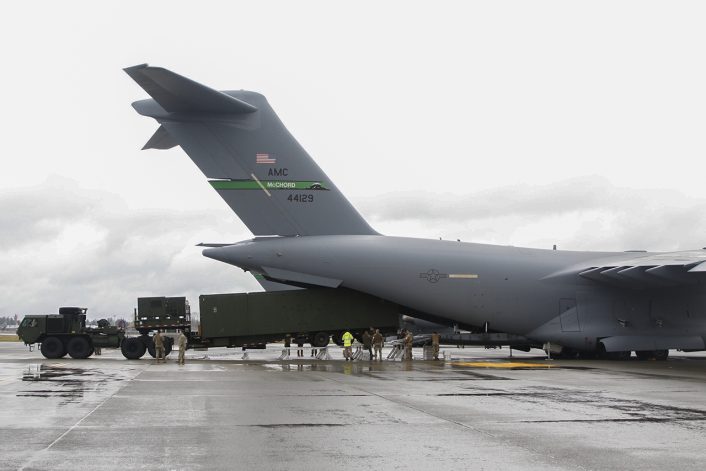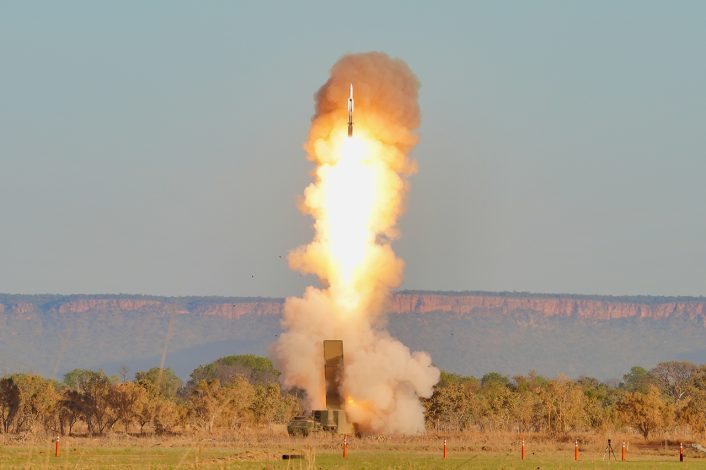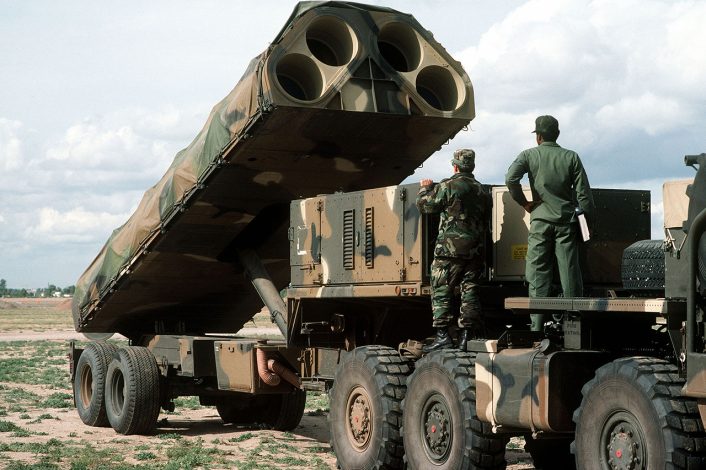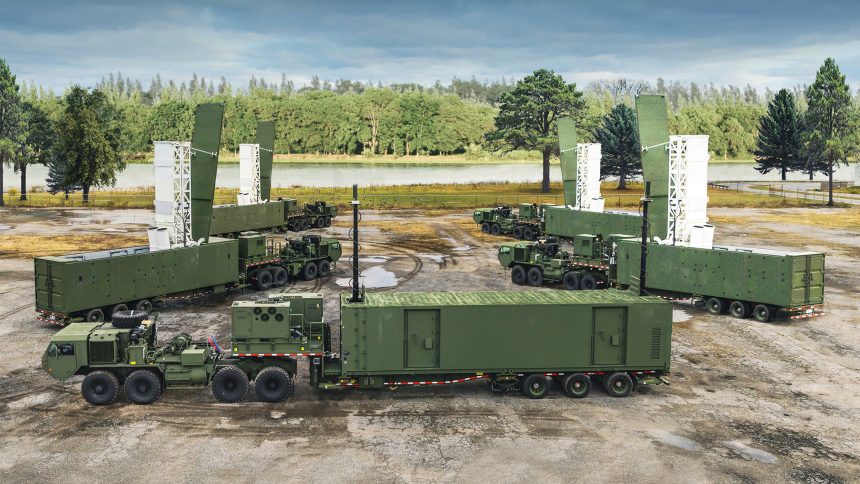Defense Minister Boris Pistorious confirmed during a meeting with his U.S. counterpart that Germany had officially requested clearance to buy the Typhon, a containerized launcher compatible with Tomahawk and SM-6 missiles.
The announcement was made while Pistorious was undertaking an official visit to the United States, and comes almost exactly one year after the U.S. announced that its forces in Germany would be reinforced with missile systems like the Typhon from 2026. This decision was a subject of discussion during Pistorious’ meeting with U.S. Secretary of Defense Pete Hegseth.
Re-evaluations of the U.S. military’s European deployments have been a hot topic since the start of President Trump’s second administration, though Pistorious remains “confident” that the agreement will be honoured. Germany’s procurement of Typhon would be the system’s first overseas sale, though interest has also been noted from the Philippines. The final decision on whether to go ahead with the purchase will not be made until after the request is approved.
Defence Minister #Pistorius met his US counterpart @SecDef in Washington yesterday. 🇩🇪 is planning to procure the 🇺🇸 weapon system Typhon – a mobile, ground-launched system that can fire various missile types up to 2000 km – to enhance defence capability in 🇩🇪 and Europe. 1/2 pic.twitter.com/206C8iZkBq
— Germany at NATO (@GermanyNATO) July 15, 2025
Typhon is a transporter-erector-launcher (TEL) system that fits the footprint of a 40 ft ISO standard container. Importantly, though, the system is not built directly from containers unlike some new designs. Still, the specific size means the system is in effect containerized and can be easily transported and handled for rapid overseas deployment. Each launcher can house four vertical launch system (VLS) cells based on the ubiquitous Mark 41 VLS used on a wide range of naval vessels. The system is very closely related to – essentially an adaptation of – the U.S. Navy’s Mark 70 Payload Delivery System.

Whether the deployment of U.S. launchers to Europe goes ahead may influence Germany’s choice. Whichever way, there are strong arguments to consider – if the deal falls through, procuring the launchers would provide Germany with an equivalent sovereign capability, but if the deal goes ahead then the nations could benefit from joint basing, training, and logistics.

Long term ambitions in Germany remain set on homegrown capabilities, partnering with the UK and other European allies on a number of long range strike platforms. However, these missiles are still in early concept stages and are unlikely to be operational before the early to mid 2030s. Typhon, meanwhile, is an already active system that uses well proven missiles while also offering future compatibility with new U.S. missiles, including hypersonic designs.
The German Army’s current long range fires capability relies on the Medium Artillery Rocket System II, or MARS II, a local development of the American M270 Multiple Launch Rocket System. Firing guided MLRS rockets, the system has a combat range of approximately 84 kilometres. Tomahawks fired by Typhon, in comparison, could be used against targets up to 1500-2000 kilometres away.
Germany plans to acquire U.S. MRC Typhon missile systems by 2026 to deter Russia, says Defense Minister Pistorius.
The system can launch Tomahawk Block V cruise missiles with a range of ~1800 km — enough to reach Moscow from Berlin. pic.twitter.com/UajQGzd3v0
— Clash Report (@clashreport) July 15, 2025
The Typhon
Otherwise known as the Strategic Mid-Range Fires System (SMRF), the Typhon was designed to form one part of the U.S. Army’s overarching Long Range Precision Fires (LRPF) program. Also falling under the program is the development of PrSM, as well as extended range artillery cannons, and hypersonic weapons.
Interestingly, Typhon is not the first foray into ground launched Tomahawks. The U.S. Air Force previously operated the BGM-109G variant, designated Gryphon, from specially designed TELs. Unlike the Typhon, though, these units were specifically designed to deploy thermonuclear warheads. As such, the entire variant was withdrawn from service in 1991 – less than ten years after adoption – due to the Intermediate-Range Nuclear Forces (INF) Treaty.

Germany’s Wüschheim air base housed 80 Gryphons between 1985 and 1990. Deployment of 96 missiles to the UK at RAF Greenham Common became notable for triggering high profile protests, mostly related to the Greenham Common Women’s Peace Camp. Gryphon missiles were also fielded in Italy and Belgium. The Netherlands was due to host 48 missiles, but the INF treaty caused these plans to be scrapped before any deployment took place. All of these missiles were operated by and under the control of U.S. forces.
A drawing of how one of the GLCM shelters at #RAF Greenham Common looked like.#ColdWar #MilitaryHistory #Berkshire pic.twitter.com/yLh37etuwY
— Greenham Skies 🇺🇦 (@Greenham_Common) August 13, 2021
While Germany’s main interest in Typhon is likely the long range land strike option offered by Tomahawk and potentially other missiles, the system can notably also launch the SM-6, or RIM-174 Standard Extended Range Active Missile (ERAM). Usually fielded in the anti-aircraft role, the Typhon takes advantage of SM-6’s multirole capabilities by employing the weapon in an anti-surface role.
SM-6 can be used against both maritime and land-based targets, offering vastly different flight characteristics compared to the Tomahawk. The latter is designed to avoid radar detection, travelling at low level and at subsonic speeds. SM-6, on the other hand, launches on a ballistic trajectory and travels at several times the speed of sound. It can’t match the Tomahawk for pure range, but might be a more survivable weapon to use against certain air defense systems or well protected high profile targets.
Germany currently operates neither of these two missiles, though the Tomahawk has been noted as an option for equipping the German Navy’s surface ships. Tomahawk is the least expensive, and arguably more versatile, weapon of the two and is the most likely choice for German acquisition. Details on these plans will likely come following a decision on Germany’s foreign sale request.









